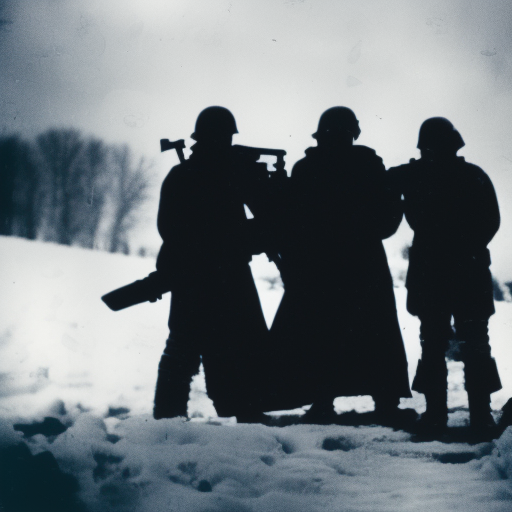Summary:
The Winter War was a military conflict between the Soviet Union and Finland that took place from November 1939 to March 1940. The Soviet Union, under Joseph Stalin, sought to annex parts of Finland to secure its borders and gain control over the Baltic Sea. Despite being heavily outnumbered and outgunned, the Finns put up a fierce resistance and inflicted heavy casualties on the Soviet forces. However, the overwhelming Soviet firepower and resources eventually led to Finland’s defeat, resulting in territorial losses and a shift in the balance of power in the region.
Background:
In the late 1930s, tensions were rising between the Soviet Union and Finland. The Soviet Union had territorial ambitions in the region and demanded that Finland cede territory along its border. Finland, fearing Soviet aggression, sought alliances with Western powers but received limited support. In November 1939, the Soviet Union launched a full-scale invasion of Finland, beginning the Winter War.
The Soviet Invasion:
The Soviet invasion of Finland was swift and overwhelming. The Red Army, with its superior numbers and firepower, launched a multi-pronged attack along the Finnish border. The Finnish forces, known as the Finnish Army and the Finnish Air Force, were ill-equipped and outnumbered. However, they utilized their knowledge of the harsh winter conditions and the dense forests to their advantage, employing guerrilla tactics and effectively defending their positions.
Finnish Resistance:
The Finnish resistance surprised the Soviets, who had expected a quick victory. The Finns, known for their resilience and determination, inflicted heavy casualties on the Soviet forces. They utilized their superior marksmanship skills and knowledge of the terrain to launch ambushes and counterattacks. The Finns also employed the use of ski troops, who were able to move swiftly through the snow-covered landscape.
Soviet Counteroffensive:
Realizing that the initial invasion had not achieved its objectives, the Soviet Union launched a massive counteroffensive in December 1939. The Red Army, with its overwhelming numerical superiority, pushed the Finnish forces back and captured several key cities and towns. The Finns, however, continued to put up a strong resistance and inflicted heavy casualties on the Soviet troops.
Peace Treaty and Aftermath:
In March 1940, the Soviet Union and Finland signed the Moscow Peace Treaty, which ended the Winter War. Finland was forced to cede territory to the Soviet Union, including the Karelian Isthmus and parts of the Finnish mainland. The war resulted in significant territorial losses for Finland but also showcased the resilience and determination of the Finnish people.
Legacy:
The Winter War had a lasting impact on Finland and the Soviet Union. For Finland, it served as a rallying point for national unity and resistance against foreign aggression. The war also led to a reevaluation of Finland’s defense strategy and increased cooperation with Western powers. For the Soviet Union, the Winter War highlighted the weaknesses in its military and led to reforms and improvements in its armed forces.
In conclusion, the Winter War was a military conflict between the Soviet Union and Finland that took place from November 1939 to March 1940. Despite being heavily outnumbered and outgunned, the Finns put up a fierce resistance and inflicted heavy casualties on the Soviet forces. However, the overwhelming Soviet firepower and resources eventually led to Finland’s defeat, resulting in territorial losses and a shift in the balance of power in the region. The war had a lasting impact on both Finland and the Soviet Union, shaping their military strategies and national identities.












